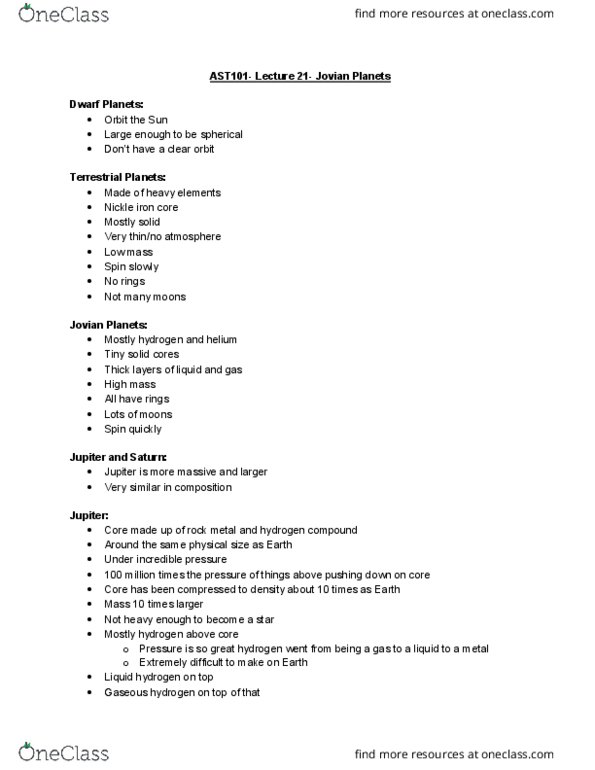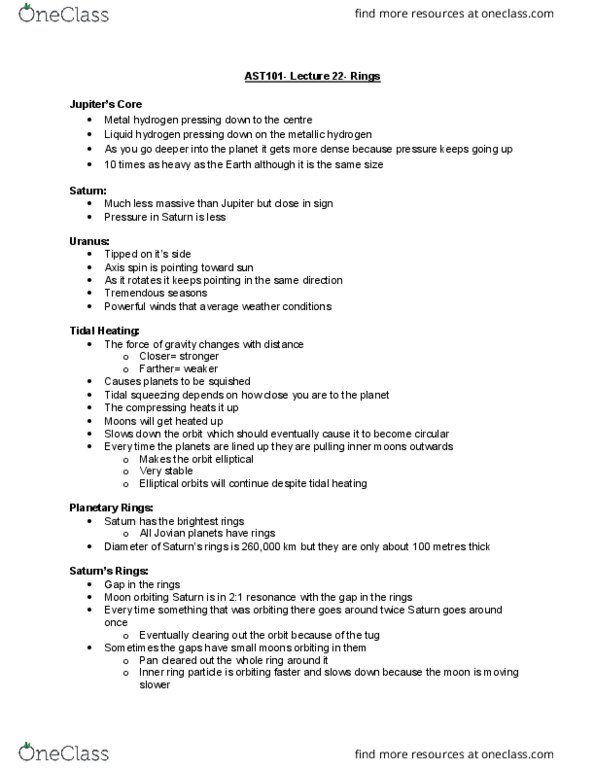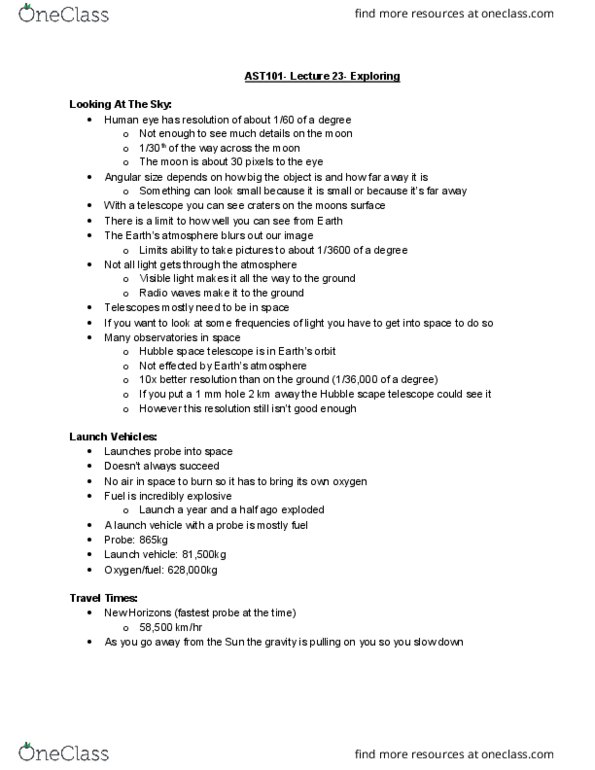AST101H1 Lecture Notes - Lecture 22: Metallic Hydrogen, Liquid Hydrogen, Solid Nitrogen
AST101H1 verified notes
22/26View all
Document Summary
Saturn: much less massive than jupiter but close in sign, pressure in saturn is less. Uranus: tipped on it"s side, axis spin is pointing toward sun, as it rotates it keeps pointing in the same direction, tremendous seasons, powerful winds that average weather conditions. Planetary rings: saturn has the brightest rings, all jovian planets have rings, diameter of saturn"s rings is 260,000 km but they are only about 100 metres thick. Where do rings come from: a moon orbiting a planet, as it gets closer to the planet the tidal forces get stronger (when io is closer to. If the moon gets close enough to a giant planet (like jupiter) gravitational forces are so great that it will crush the planet. Saturn"s moon titan: largest of saturn"s moons, similar to earth (air pressure, atmosphere, lakes, weather, no oxygen, surface is ices, liquids are hydrocarbons.




